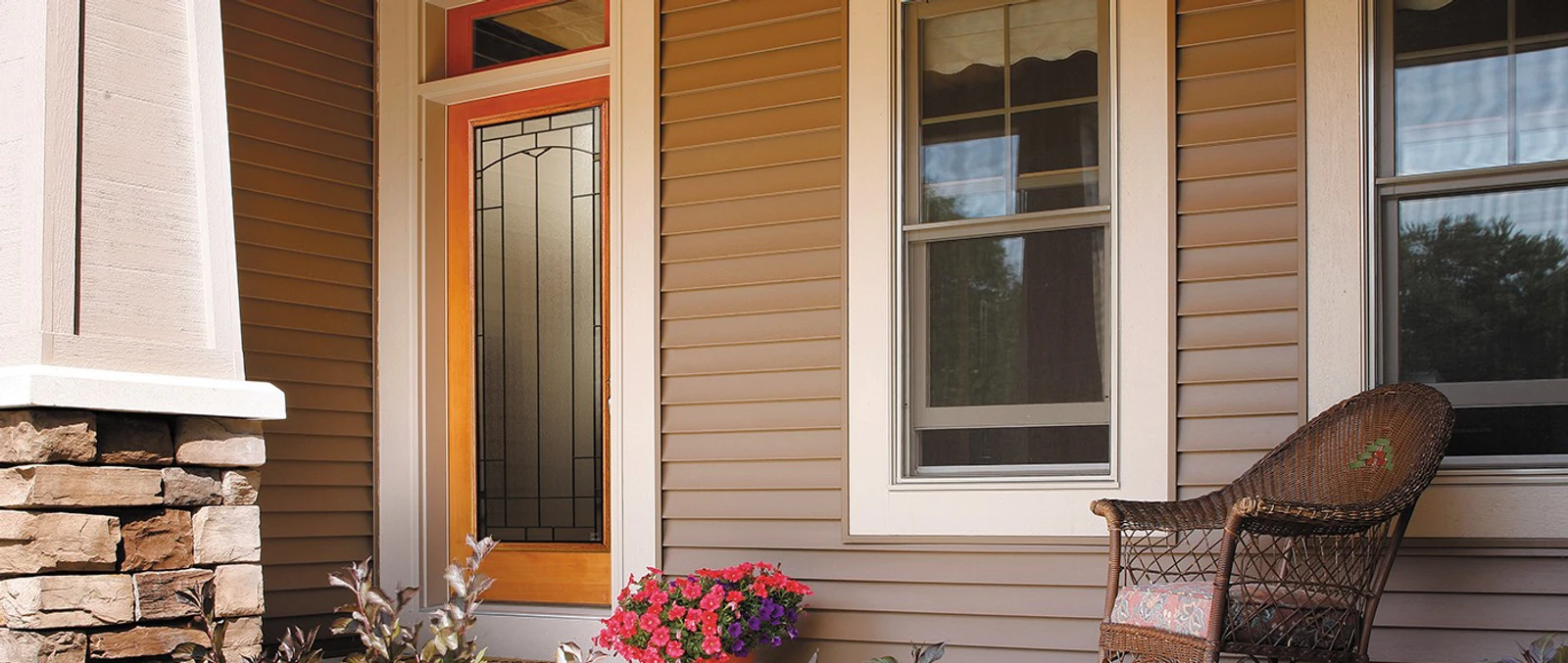Champion Insight
Selecting the right material for your entry door affects your home's security, energy efficiency, and curb appeal for decades to come. While several materials are available, steel and fiberglass have emerged as the top choices for homeowners who want lasting performance without constant maintenance.
Steel vs. Fiberglass: The Key Differences
Both materials offer excellent security and energy efficiency, but each has distinct advantages. Steel doors provide exceptional strength and typically cost less upfront, while fiberglass doors resist moisture damage and can authentically replicate wood's appearance. Understanding these differences helps you choose the material that best fits your priorities, climate, and budget.
What Makes These Materials Superior
Steel and fiberglass doors outperform traditional wood and basic vinyl options in several key areas. They resist warping and cracking, require minimal maintenance beyond occasional cleaning, and provide superior insulation when properly installed. Unlike wood doors that need regular staining or painting, these materials maintain their appearance and performance year after year.

Alternative Entry Door Materials
Wood Doors
-
Pros: Timeless beauty, can be stained or painted for a custom look.
-
Cons: High-maintenance; vulnerable to warping, rot, and weather damage. Less energy-efficient unless specially engineered.
Aluminum Doors
-
Pros: Lightweight and corrosion-resistant.
-
Cons: Less durable than steel or fiberglass. Prone to dents and poor insulation due to high thermal conductivity.
Vinyl Doors
-
Pros: Affordable, moisture-resistant, and low maintenance.
-
Cons: Less durable overall. Limited design flexibility compared to fiberglass or steel.
Additional Factors to Consider
-
Climate: In areas with extreme temperatures, humidity, or weather events, steel and fiberglass outperform wood and aluminum in both insulation and weather resistance.
-
Noise Reduction: Both fiberglass and steel doors provide effective soundproofing, especially when equipped with insulated cores and quality seals.
-
Customization Options: Fiberglass offers extensive aesthetic flexibility, convincingly replicating wood grain or providing sleek, modern appearances. Steel features bold panel designs and can accommodate elements like built-in blinds or sidelites.
-
Size & Fit: Standard entry doors typically measure 36" wide, 80" tall, and 1.75" thick. Champion offers various sizes—including French and tall door options—to complement your home's architectural style.
-
Jamb Width: Accurate measurement of your wall thickness—including drywall and siding—ensures a secure and proper fit.
-
Sun Exposure: For south- or west-facing entries, lighter colors or UV-resistant finishes reduce fading and heat absorption—fiberglass and steel doors respond well to these treatments.
-
Design Enhancements: Add visual interest and functionality with sidelites, transoms, decorative hardware, or integrated blinds—all compatible with fiberglass and steel designs.
The Bottom Line
While wood, vinyl, and aluminum have specific applications, steel and fiberglass entry doors deliver the optimal combination of durability, energy efficiency, and security—with far less maintenance. That's why Champion Windows exclusively recommends and installs these superior materials. Your entry door represents more than just curb appeal—it's an investment in your home's comfort, protection, and long-term value.




